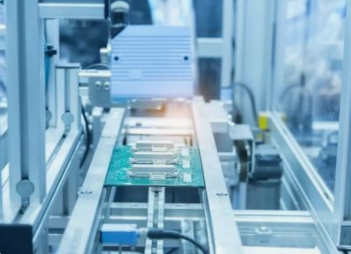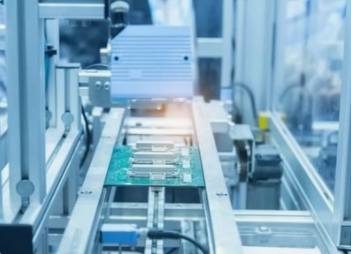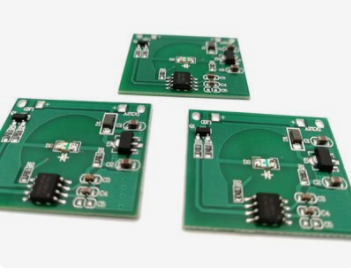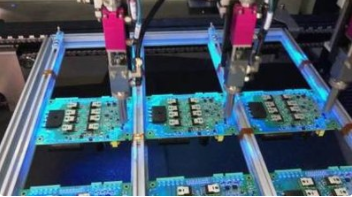
1 Water based cleaning
1.1 Water based cleaning process
The water-based cleaning process uses water as the cleaning medium. In order to improve the cleaning effect, a small amount of surfactant, cleaning aids, corrosion inhibitors and other chemicals can be added to the water (generally 2% - 10%). In addition, it can be used as additive in water-based cleaning agent according to the specific conditions of different types of pollution on printed circuit boards, so that its cleaning scope is wider. The water-based cleaning agent has a good dissolution effect on water-soluble dirt, and can achieve better cleaning effect by combining with physical cleaning methods such as heating, brushing, spraying and spraying, and ultrasonic cleaning. Adding surfactant into water-based cleaning agent can greatly reduce the surface tension of water, enhance the penetration and spreading ability of water-based cleaning agent, and better penetrate into the gap between closely arranged electronic components, so as to clean the dirt that seeps into the interior of printed circuit board substrate.

The dissolution of water and the emulsification and dispersion of surfactant can also be used to remove the residue of synthetic active flux. It can not only dissolve and remove various water-soluble dirt, but also remove non soluble dirt such as synthetic resin and fat. For the use of rosin based flux or water-based cleaning agent, appropriate saponifier is added. Saponifier is a chemical substance used to saponify rosin acid in rosin, fatty acid in oil and other organic acids to generate water soluble fatty acid salts (soaps) when cleaning printed circuit boards. This is a common component in many cleaning agents used to clean flux and grease on printed circuit boards. Saponifiers are usually strongly alkaline inorganic substances such as sodium hydroxide, potassium hydroxide, etc., and may also be alkaline organic substances such as monoethanolamine. In general, commercial saponifiers also contain organic solvents and surfactant components to clean and remove residues that cannot occur saponification reaction. Saponifier may corrode aluminum, zinc and other metals on PCB, especially when the cleaning temperature is high and the cleaning time is long. Therefore, corrosion inhibitor should be added in the formula. However, it should be noted that printed circuit boards with alkaline sensitive components should not be cleaned with water-based detergent containing saponifier.
In the PCB process of water-based cleaning, if ultrasonic cleaning is used together, the insoluble dirt can be effectively removed from the electronic junction board by using the "hole effect" of a large number of tiny air bubbles generated during the transmission of ultrasonic in the cleaning solution. Considering the compatibility requirements of PCB, electronic components and ultrasonic, the ultrasonic frequency used for PCB cleaning is generally about 40KHz.
The water-based cleaning process includes cleaning, rinsing and drying. First, use water-based cleaning agent with a concentration of 2% - 10% in combination with physical cleaning methods such as heating, brushing, spraying and spraying, ultrasonic cleaning, etc. to wash printed circuit boards in batches, then rinse them with pure water or ionic water (DI water) for 2-3 times, and finally dry them with hot air. The high cost of water-based cleaning is caused by the need to use pure water for rinsing. Although high-quality water quality is a reliable guarantee for the cleaning quality, in some cases, the deionized water with a low cost conductivity of 5um · cm is used for rinsing first, and then the high-purity deionized water with a conductivity of 18um · cm is used for rinsing once.
2 Semi water-based cleaning
2.1 Semi aqueous cleaning agent
Organic solvents and surfactants are generally found in the components of semi water-based cleaning agents. For example, the EC-7 semi water-based cleaning agent first used for PCB cleaning is composed of terpene hydrocarbon solvents and surfactants. Most semi water-based cleaning agents also contain water in their formulations. However, due to the large amount of water (only 5% - 20%), semi water-based solvents are transparent and uniform solutions just like solvent cleaning agents. Different from general solvent cleaners, the boiling point of organic solvent used for semi water-based cleaners is relatively high, so it is not necessary to clean in a closed environment like solvent cleaners because of low volatility. In addition, it is not necessary to change the cleaning agent frequently during the cleaning process, just supplement the amount of cleaning agent appropriately. The organic solvents used to prepare the semi water-based cleaning agent for cleaning printed circuit boards mainly include terpene and petroleum hydrocarbon solvents, glycol ether, N-methylpyrrolidone, etc. The solvent type shall be selected according to the pollution of raw materials such as printed circuit boards and electronic components, and the type of soldering aid used during welding.
2.2 Semi aqueous cleaning process
It also includes three processes: cleaning, rinsing and drying. Ultrasonic cleaning is often used in conjunction with the cleaning process to improve the cleaning effect and reduce the cleaning time. Since the use of ultrasonic will increase the temperature of the cleaning agent, it is necessary to strictly control the cleaning temperature and not exceed the flash point of the cleaning solution (generally the cleaning temperature is controlled below 70 ℃). An emulsion recovery tank is added between the cleaning and rinsing processes, and the organic solvent concentration in the semi water-based cleaning solution is very high. After cleaning, there will still be more cleaning solution on the surface of the printed circuit board. If the cleaned printed circuit board is directly put into the water bleaching solution, the organic solvent on the surface of the printed circuit board will pollute the rinsing water, greatly increasing the load of the subsequent water treatment process, An emulsification recovery device containing emulsifier and water solvent is added between the cleaning and rinsing processes, so that the organic solvent on the surface of the printed circuit board can be removed from the surface of the printed circuit board by emulsification dispersion. In this emulsification recovery device, a filter and an oil-water separation device can be used to separate and recover the organic solvent and dirt precipitation, Since there are few organic solvents on the surface of printed circuit board entering the rinsing tank, the load of rinsing process and wastewater treatment is reduced. Then rinse with deionized water for 2-3 times to remove the dirt. Since semi water-based cleaning uses water as the rinsing agent, the same drying difficulty as water-based cleaning exists, and similar measures need to be taken to improve the drying speed.
2.3 Advantages and disadvantages of semi water based cleaning process
The advantages of semi water based cleaning process are: it has strong adaptability to various PCB welding processes, so it is unnecessary to change the original welding process when using semi water based cleaning process; Its cleaning ability is relatively strong, and it can remove water-soluble dirt and oil stain at the same time; It has good compatibility with most metal and plastic materials. Compared with solvent cleaning agents, it is not easy to volatilize. The small evaporation loss in the use process is: there are problems like water-based cleaning, such as the need to use pure water for rinsing, difficult drying, and large wastewater treatment capacity. The semi water-based cleaning process needs to occupy a large area and space, and the one-time investment in equipment is large, especially the online cleaning machine. As the semi water-based cleaning agent contains more organic solvents, it is necessary to increase the protection of toxic solvents, fire and explosion prevention and other safety measures. Moreover, the semi water-based cleaning agent can not be recycled by distillation like solvent cleaning agent, so the PCB production cost is high.







